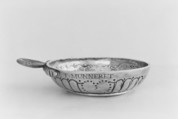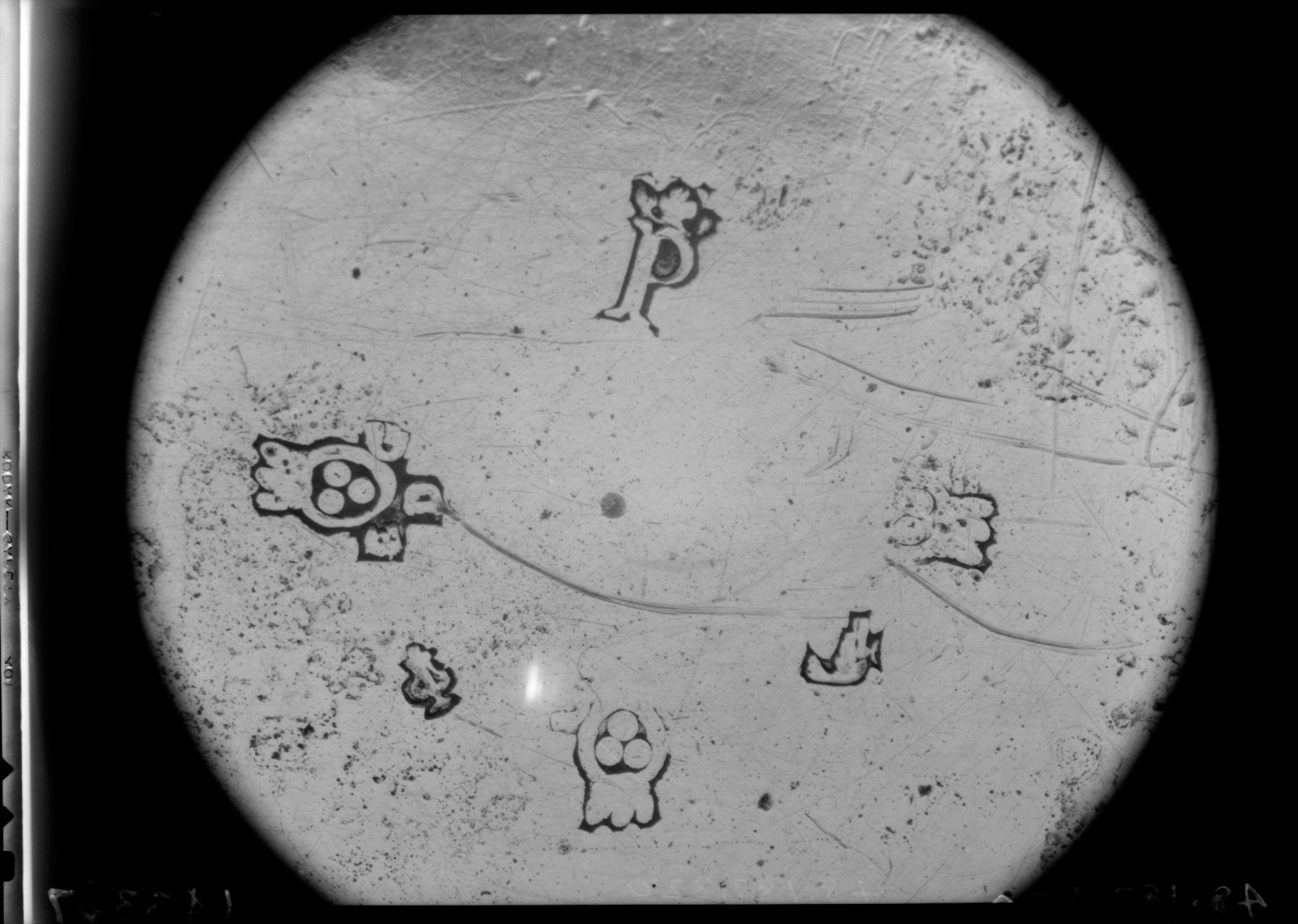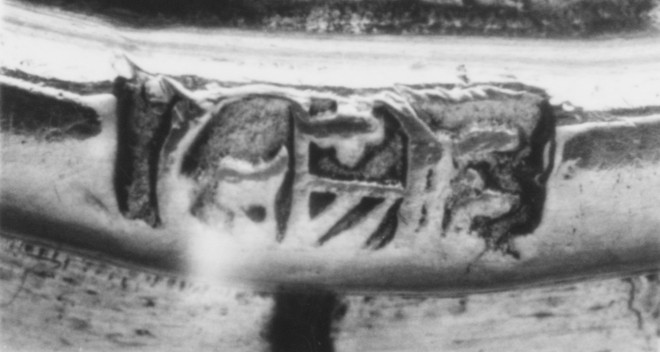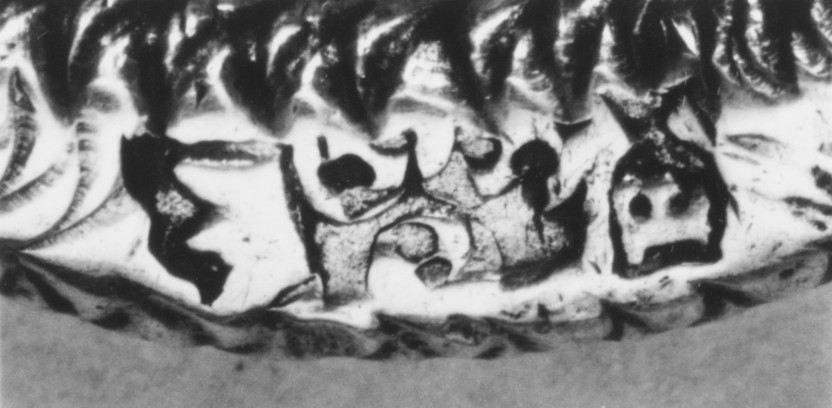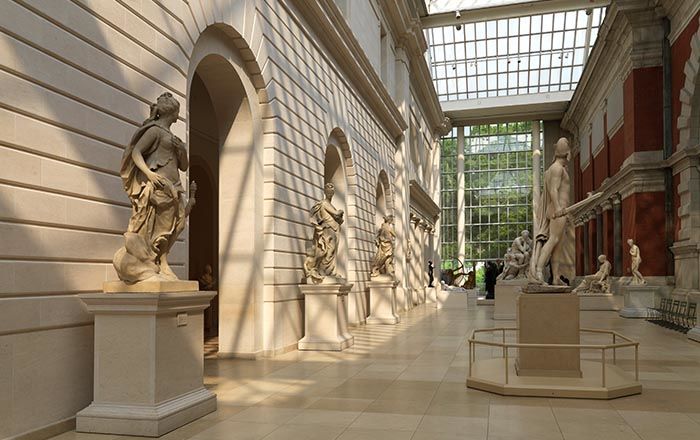Wine taster
Not on view
Also known as a tasse à vin, a tâte-vin, or a tastevin, a wine taster was used by a wine merchant to assess the quality, clarity, and color of wine. The reflective properties, resistance to corrosion, and the fact that it would not taint the wine in any way, made silver the ideal material for a winetaster. Shallow in form, these bowls frequently have a convex bottom. The polished surface, either left smooth or embellished with gadrooning and other decorations, would catch the light and reflect it throughout the wine so that it could be checked for impurities. Holding just a small amount of wine, silver wine tasters are often personalized with initials, names, and dates or coats-of-arms. Here the name F. Munneret, likely that of a former owner, is engraved on the outside of bowl which is incised and punched with vertical lobes and hearts. The looped serpent-shaped handle refers to Dionysus, the god of wine. This wine taster was made in Dijon, the capital of Burgundy where the wine industry flourished in the 17th and 18th centuries. The bowl is incised and punched with vertical lobes interrupted by hearts.
Daughter of one of the founders of the Weyerhaeuser Timber Company, Catherine D. Wentworth (1865–1948) was an art student and painter who lived in France for thirty years. She became one of the most important American collectors of eighteenth-century French silver and on her death in 1948 bequeathed part of her significant collection of silver, gold boxes, French furniture and textiles to the Metropolitan Museum. The collection is particularly strong in domestic silver, much of it provincial, including a group of wine tasters.
This image cannot be enlarged, viewed at full screen, or downloaded.
This artwork is meant to be viewed from right to left. Scroll left to view more.
